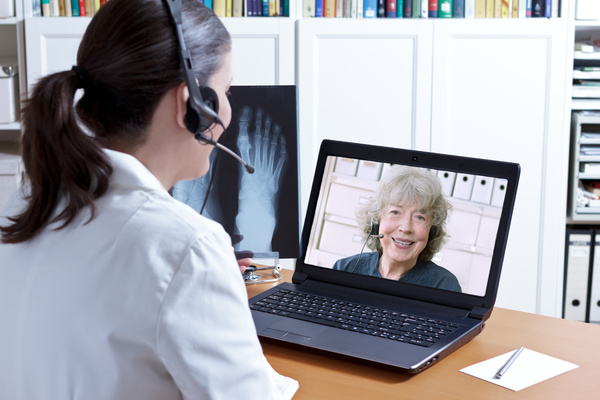
The recent health crisis has catapulted telemedicine to new heights of popularity among Americans, but the practice was already being widely used before COVID-19. Given the advancement of digital technology, telehealth continues to be an increasingly popular way for patients and medical professionals to interact with each other.
It’s safe to say that not only is telehealth here to stay, but it’s becoming a preferred way to seek medical attention among many Americans. According to a recent poll of US consumers, nearly four in ten Americans (38%) have used telehealth services to meet with a medical or mental health professional, up from 31% in the fall of 2020. Perhaps more significantly, 43% of adults surveyed say they want to continue using telehealth services when the pandemic is over. More than one in three adults (34%) say they would prefer telehealth service to an in-person doctor’s office visit, up from 31% in 2020.
The platforms available are making this mode of medical communication more streamlined and effective. There are a number of telehealth modalities currently available to Americans, helping them connect with their health care practitioners using technology, including the following:
Real-Time Interaction
Patients can interact with their doctors and nurses in real-time via platforms such as video and telephone using their smartphones, tablets, and computers. Also referred to as ‘synchronous’ telehealth, real-time interaction between patients and medical professionals allows for evaluation, diagnosis, treatment recommendations, prescriptions, and even the use of peripheral medical equipment such as digital stethoscopes or ultrasounds by another medical practitioner present with the patient.
Asynchronous Medical Assistance
With this modality, patients can access information pertinent to their health and medical situation, such as data, images, and messages from their health care practitioner. These portals can allow for indirect communication through secure messaging without a real-time interface.
Remote Monitoring
This type of telehealth modality allows for the direct communication of a patient’s health metrics remotely. This could either be synchronous or asynchronous communication with a healthcare provider.

Why Choose Telehealth?
There are several reasons why telehealth continues to be a sought-after way for both patients and health care practitioners to communicate with each other:
Low-risk of exposure to contagion. In the event that a contagious medical condition is being dealt with, remote medical care can help contain any potential spread.
No commute required. For many Americans, accessing medical care can be difficult, particularly for those in remote areas or those who have mobility issues. The ability to make a phone call or log into the internet to video chat can eliminate this challenge.
Access to all levels of professionals. Telehealth not only allows patients to communicate with their general practitioners, but also other types of professionals, including specialists in women’s health, behavioral health, and others.
Affordable. Telehealth is more cost-effective than in-person visits, both for patients and the overall medical industry. According to a recent study from Health Affairs, a telehealth visit costs on average of about $79, compared to an in-person doctor visit of $146. For those who have to pay out-of-pocket, the savings can be significant.
For further savings, patients can look to health care sharing ministries. In fact, members of these programs can save as much as 30% to 40% compared to conventional health insurance.
To find out about health sharing programs that support telehealth visits, contact USHealthshare today and learn how to share the health.

